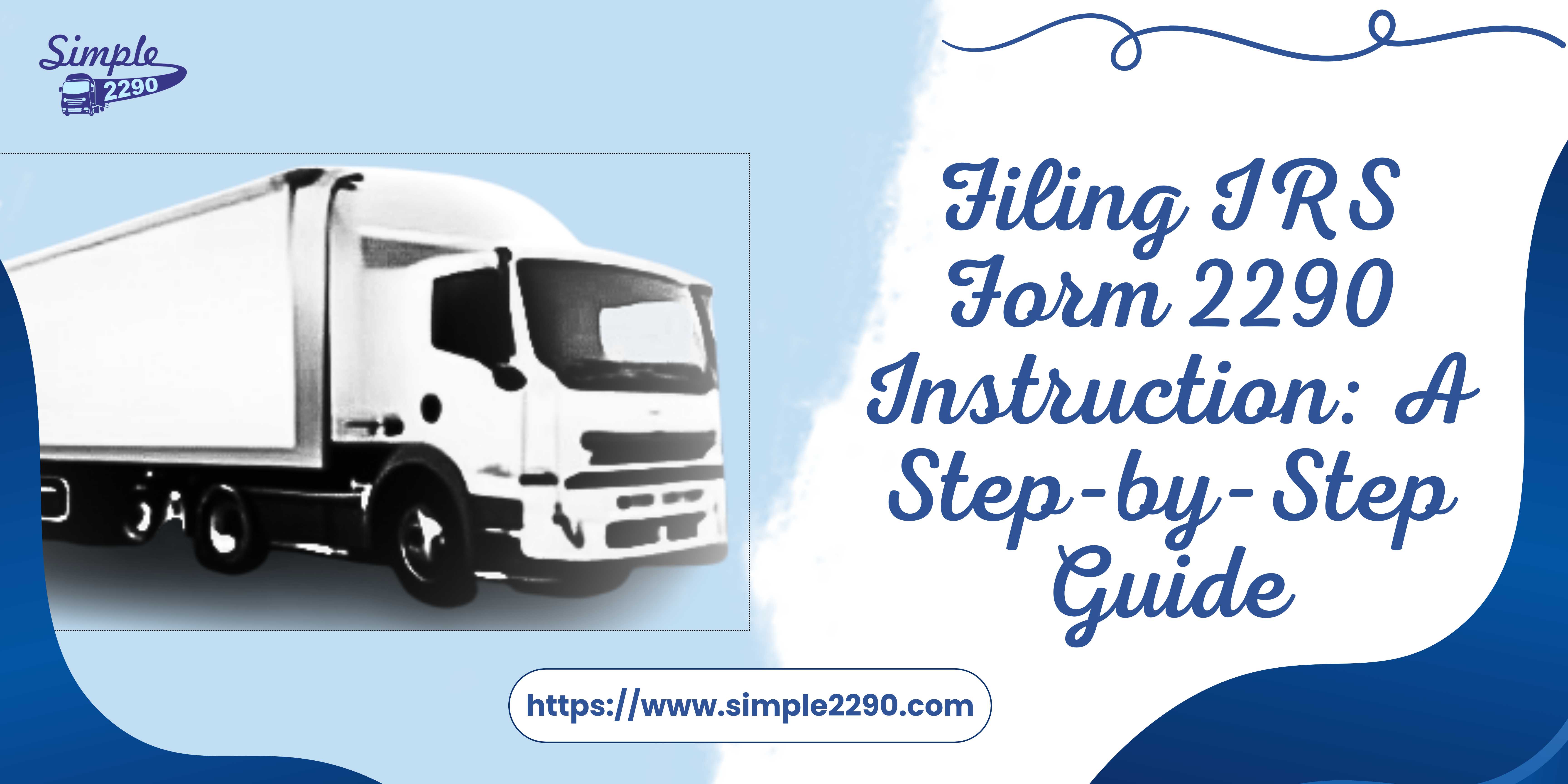10-14-2024
Filing IRS Form 2290 Instruction: A Step-by-Step Guide
Share:
Introduction
Owners of trucks and fleet managers who operate large vehicles on public highways need to be required to file IRS Form 2290 every year. According to federal regulation, to guarantee that heavy vehicles contribute properly to the maintenance of the public roads that operate on, ensuring an HVUT return requires filling out Form 2290. Form 2290 filing may appear difficult initially, but it can be made simpler by adhering to the instructions and comprehending how the process operates. We will explain how to submit Form 2290 correctly to prevent frequent mistakes and ensure that you receive your Schedule 1 from the IRS on schedule.
The IRS Form 2290: An Overview
IRS Form 2290: What Is It Used For?
Receiving Schedule 1, which is formal documentation for tax compliance, requires this. To make sure your heavy vehicle stays in compliance with federal laws,
Stamped Schedule 1 must be supplied when renewing your vehicle registration with the Department of Motor Vehicles (DMV).
Who Needs to File?
- Independent Owner Operator
- Fleet Owners
- Tax Preparers
- Agricultural Operators
- Nonprofit Organizations
- Legal and Compliance Departments
- Trucks with a new owner. This includes those who recently bought second-hand vehicles.
Preparing to File: Key Information and Resources
A successful filing process begins by assembling the required information and resources.
Gather Required Information
Here's the information you'll need ready before you begin the filing procedure:
- The Vehicle Identification Number: The only identifier of your vehicle.
- Taxable Gross Weight: The total weight of the vehicle is not including trailers.
- Employer Identification Number: It is required for application Your social security number isn't enough.
- Payment Information: Information about the method of payment you want to use for HVUT.
Choosing the Right Filing Method and Filing provider
The IRS offers two ways of filing Form 2290; electronic or "e-filing" is usually recommended, though paper filing may still be an option if submitting for more than 25 vehicles.
Simple 2290 is a reputable E-file provider with IRS approval that makes filing easier for fleet owners and truckers.
Step-by-Step Guide to Filing Form 2290
Step 1: Complete the Form
When you fill out the form be sure to fill in the form with precision to avoid penalties or delays.
- Input Business Information: Complete details such as name, address, and EIN section in a meticulous manner.
- Information about the Vehicle: Give the VIN and weight of each vehicle.
Step 2: File the Form
Once you have completed the form and are ready to submit the form then you must choose the method of submission you prefer.
Electronic Filing:
- Follow the IRS Form 2290 instructions on an IRS-authorized e-file provider's site.
- Verify the accuracy before the submission.
- Take a photocopy of the submission confirmation to keep for your records.
Paper Filing:
Send completed Form 2290 to the IRS address listed in the instructions for the form.
Think about the use of certified mail to verify the receipt.
Step 3: Pay the HVUT
Lastly, pay the tax due with any of the IRS's approved payment methods:
Common Mistakes to Avoid
In the course of filing, several mistakes that are easily fixable can cause delays in filing. Here's how to avoid these mistakes:
- Incorrect VIN or EIN: Double-check these identifiers for accuracy.
- Late filing deadlines The deadline to file is usually August 31 every year. Late submissions are penalized.
- Incorrectly calculating tax Do not use the IRS rates with accuracy to calculate the HVUT tax obligation.
Conclusion
IRS Form 2290 filing doesn't need to be difficult; by following this simple process, you can ensure compliance with federal rules, contribute to maintaining public highways, and remain out of trouble with the law. Filing taxes will become much simpler if you keep accurate records and familiarize yourself with IRS regulations.
